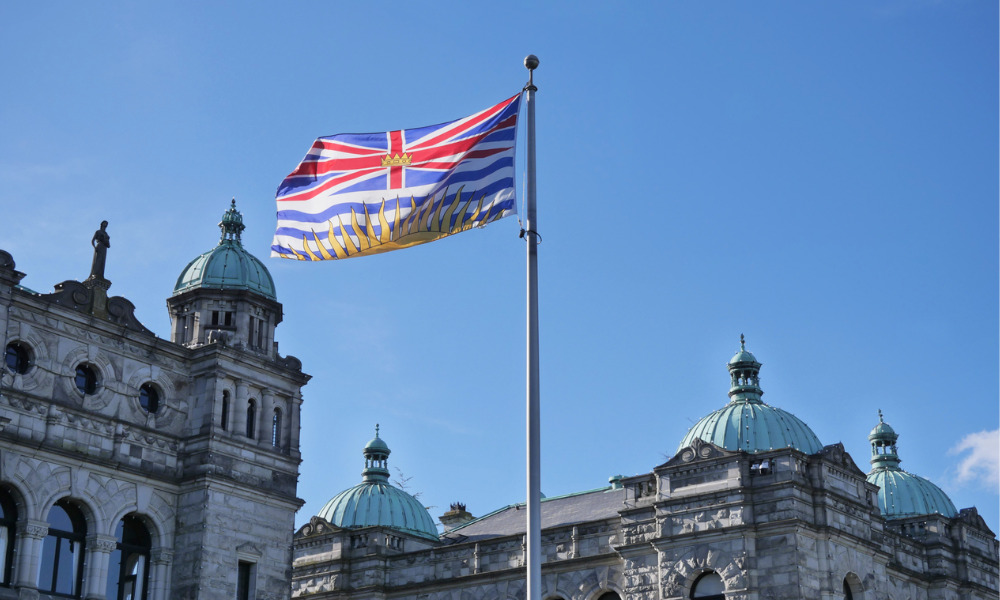In the famous trilogy of labour cases addressing freedom of association under Charter s. 2(d), the Supreme Court of Canada in the 1980s ruled that the right to associate did not protect the right to strike or to bargaining collectively. However, a recent case on reserve at the Supreme Court — Health Services and Support-Facilities Subsector Bargaining Association, et al v. British Columbia — could change that and freedom of association may once again become a live issue for unions.
It’s part of a slow erosion of the original trilogy of cases which have been criticized by many legal commentators and unions.
In 2001 in Dunmore v. Ontario (Attorney General), the Supreme Court struck down provisions in Ontario’s labour code that restricted agricultural workers from organizing because the provisions violated the workers’ right to freedom of association.
Most Read
Comments made by the court provided unions with some hope that they could rely on freedom of association to challenge legislation that interferes with the right to organize or the right to negotiate a collective bargaining agreement, says Thomas Roper, of Roper Greyell LLP in Vancouver.
A more recent freedom of association challenge from health sector unions in B.C. argued legislation that removed subcontracting requirements in collective agreements interfered with collective bargaining and therefore targeted s. 2(d) conduct, says Roper.
In Health Services — or the Bill 29 case as it has become known — unions relied on the Dunmore decision, but the B.C. appeal court rejected this argument and stated that Dunmore had not cracked the door wide enough for the appellants’ claim to fit through.
The case has now been on reserve at the Supreme Court for more than a year, which indicates the court is giving it serious thought, says Fay Faraday of Cavalluzzo Hayes Shilton McIntrye & Cornish LLP in Toronto.
But unless the Supreme Court reverses the B.C. appeal court decision, there will remain little scope for unions to continue challenging restrictions on organizing strikes or picketing restrictions based on freedom of association, says Roper.
On the other hand, most labour and employment lawyers agree that s. 2(b) of the Charter, freedom of expression, is providing unions with a more effective avenue to challenge picketing restrictions and strike restrictions.
In the Supreme Court’s 2002 decision, Retail, Wholesale and Department Store Union, Local 558 v. Pepsi-Cola Canada Beverages (West) Ltd., the court overturned a long-standing restriction on third-party picketing on the basis of freedom of expression.
And in Industrial Hardwood Products Ltd. v. Industrial Wood and Allied Workers of Canada, a 2001 case, the Supreme Court emphasized that a robust and democratic society should tolerate some inconvenience in the name of free speech. The court said the inconvenience includes a limited delay caused by picketing workers, but a complete obstruction of a business during a strike is unacceptable, explains Richard Charney, a management labour relations and employment lawyer at Ogilvy Renault LLP.
The court seems to have broadened the laws about picketing to some extent in these cases, he says. And although rulings on free expression don’t cancel out provincial laws that permit hiring replacements during strikes, they do make it more inconvenient for employers to replace strikers.
“So freedom of expression goes beyond mere expression; it has an element of causing inconvenience and difficulty for the employer,” he says.
Mandatory retirement
Another theme that’s been addressed by the courts is whether the rights of the collective take precedence over the rights of the individual.
The classic example is the Supreme Court’s 1990 decision in McKinney v. University of Guelph, where the court held that mandatory retirement under the Ontario Human Rights Code was discriminatory under the right to equality in s. 15(1) of the Charter, but that the breach was s. 1 justified.
The court was reluctant to decide otherwise, because of the give and take of collective bargaining, says Charney. For example, an employer might enforce retirement at a certain age, but offer a pension package; or an employer might offer a voluntary severance package that favours older people over younger people.
“It’s all part of the quid pro quo of collective bargaining, and arbitrators have been sensitive to that,” he says.
However, most provinces have since moved to eliminate restrictions on mandatory retirement. In Ontario, for example, the province has eliminated mandatory retirement, but still allowed employers to discontinue benefits at 65.
“I wouldn’t be surprised if we see a Charter challenge to that at some point,” says Frances Gallop, a management labour lawyer at Filion Wakely Thorup Angeletti LLP in Toronto.
Aboriginal law
Another important Charter issue in the labour and employment arena involves the intersection between aboriginal self-government and labour relations law, says Lewis Gottheil, counsel and director of the legal department at CAW-Canada.
In 2003, CAW was certified to represent workers at the Great Blue Herron Casino located on reserve land near Peterborough, Ont. The First Nation’s band council enacted its own labour relations act that would take precedence over the provincial act. The Ontario Labour Board and the Divisional Court both upheld the provincial act, and the First Nation went to the appeal court on the basis of ss. 35 and 24 of the Charter, says Gottheil.
“The issue became which rules apply,” he says. “If you have to deal with the law passed by the aboriginal First Nations, what if it provides lesser rights?”
Privacy rights
With employee surveillance on the rise, employees’ rights to privacy in the workplace is also becoming increasingly important.
The Charter emboldens people, the community, the courts, and legislators, to enshrine, create, and enforce rights that weren’t recognized in the past, says Brian Johnston, of Stewart McKelvey Stirling Scales in Halifax.
The idea of privacy has its foundations with the Charter, he says, and the courts are talking about a right to privacy even in the absence of statutory entitlement to privacy in many jurisdictions.
Elaine Willis, labour relations expert, predicts public sector employees will increasingly fight these types of cases under s. 8, which is the right to be secure from unreasonable search or seizure.
“[Biometric scanning is] a technology whose time has come and providing employers can afford it, we could be seeing more of those kinds of cases, and more Charter arguments,” she says.










